Do you love using Parmesan rind to create flavorful and delicious soups? If so, then this post is for you!
Busy schedules can make it difficult to find the time necessary to buy a fresh block of cheese with a nice, hard rind each week. But don’t worry!
We have some creative solutions that can give your soup the same flavor and texture as traditional Parmesan rind.
Read on to learn more about our favorite options to substitute for Parmesan rind – making restaurant-quality dinners fast and easy!
What Is Parmesan Rind?
Parmesan rind is the hard outer layer of cheese that forms when Parmesan cheese is aged.
The rind can flavor soups, sauces, and other dishes. It has a nutty, earthy flavor that adds depth and richness to any dish it is added to.
The rind is also high in umami flavors, bringing out the other flavors in a dish.
Parmesan rinds can be used to intensify the flavor of sauces and soups or to add texture to dishes such as risotto.
It can also be used as a crunchy topping on salads or roasted vegetables.
Parmesan rinds are best when they are fresh. If you purchase a block of Parmesan cheese, the rind will last longer in the refrigerator than the cheese.
Once cooked, Parmesan rinds can be eaten as a snack or used in other recipes, such as pasta dishes.
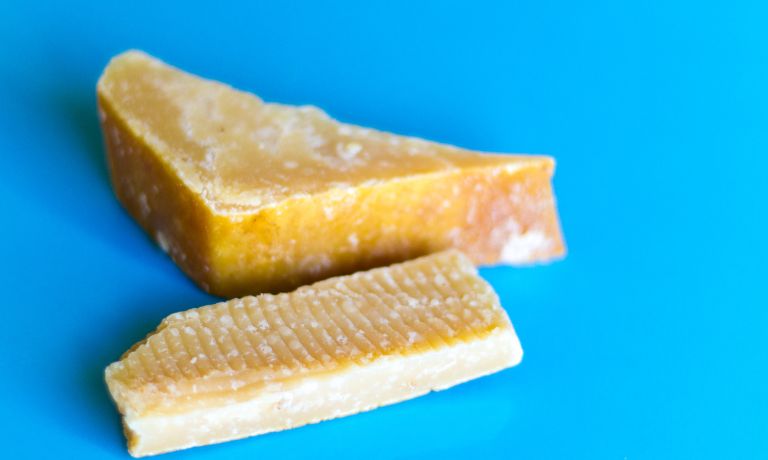
Substitutes For Parmesan Rind
Parmesan rinds are a great addition to soups and stews, adding a savory depth of flavor that can be hard to replicate.
Fortunately, there are some good options to substitute for Parmesan rind if you have none.
Asiago Rind
Asiago cheese is a hard, aged Italian cow’s milk cheese with a nutty and sharp flavor ranging from mild to strong.
The rind of the cheese is often dried and used in recipes as a flavorful ingredient that adds complexity and texture to dishes.
Asiago rinds are a great addition to salads and pasta dishes, providing a pleasant crunch.
Asiago rinds can be used similarly to Parmesan rinds, commonly incorporated into soups and sauces for added flavor.
The sharpness of Asiago rinds helps to bring out other flavors in the dish while also adding an interesting texture element.
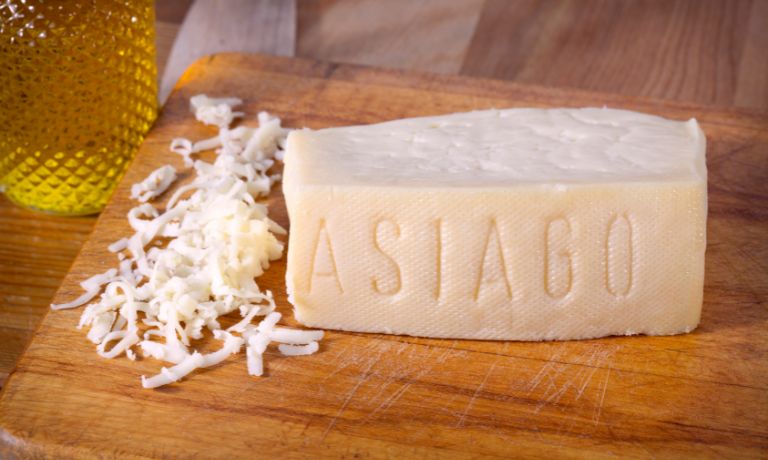
Cheddar Rind
The Cheddar rind is the hard outer layer of a block of cheddar cheese.
It can be used as a substitute for parmesan rind in some dishes because it is similar in texture and flavor.
Cheddar rind adds a nutty, slightly sweet flavor to soups, stews, and sauces.
It also lends its crunchy texture to the dishes used, giving them an extra bit of body.
When added to risotto or macaroni and cheese, cheddar rind can help thicken the dish and add a delicious flavor boost.
It also works well when sprinkled over salads for a savory kick.
Cheddar rind is especially useful in vegetarian dishes, as it adds a depth of flavor without the need for meat or fish.

Gruyère Rind
Gruyère Rind is a hard cow’s milk cheese made in the French-speaking Swiss canton of Fribourg.
It is aged for several months with a characteristic gritty texture and strong, nutty flavor.
As it matures, it develops a pale yellow to orange color and an intense aroma.
Gruyère rind can be an alternative to Parmesan rind in soups, stews, and sauces.
It is also perfect for adding texture and richness to casseroles or gratins. It can be grated over salads or enjoyed as a snack with crackers.
The Gruyère rind adds a distinct nutty flavor to dishes without overpowering the other flavors.
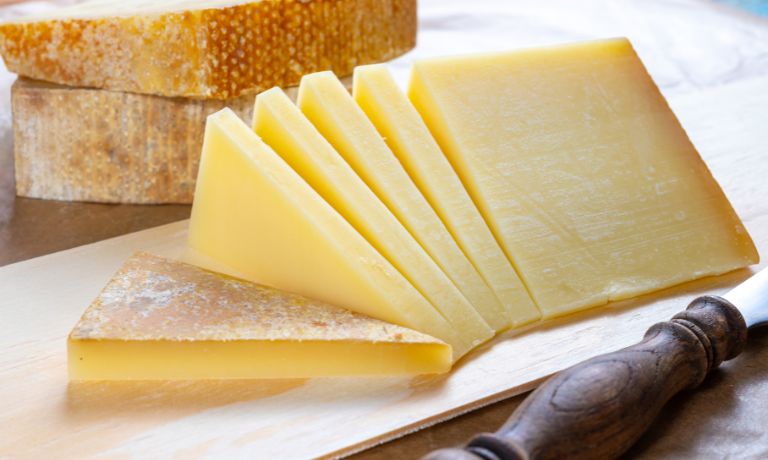
Feta Cheese
Feta cheese is traditionally made from sheep’s milk and goat’s milk.
Feta has a mild, salty flavor with a soft, crumbly texture. It’s aged in brine so that it can have an intense flavor.
Feta can be used as a substitute for parmesan rind because it has a similar flavor and texture but without the hard outer shell of the rind.
Feta is also much lower in fat than Parmesan, making it a lighter and healthier option. It can be added to salads, sandwiches, pizzas, or casseroles.
It has a more neutral flavor than Parmesan so that it won’t overpower the other ingredients in a dish.
Feta also has the benefit of being easier to find and less expensive than Parmesan.
In addition, it’s much easier to prepare because it doesn’t require grating like parmesan.
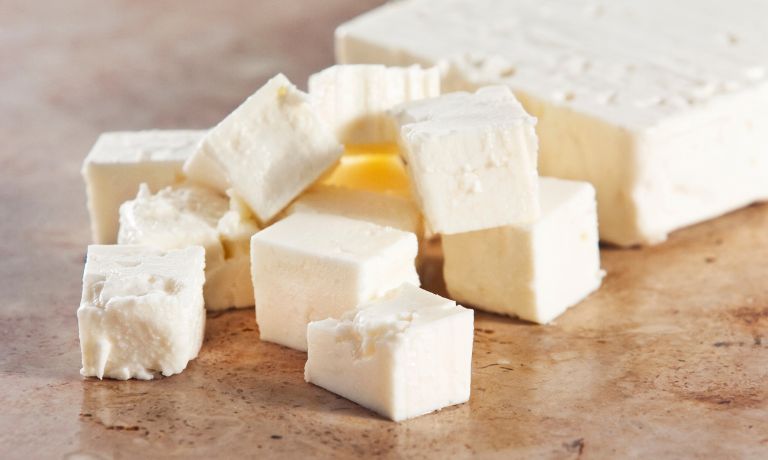
Pecorino Cheese
Pecorino cheese is a family of hard, salty Italian cheese made from sheep’s milk.
It can be semi-soft or firm and has a flavor that varies depending on aging time: it can range from mild to sharp and nutty.
Pecorino is also an excellent calcium, protein, and other vitamins and minerals source.
Pecorino cheese is usually grated and used as a topping for pasta dishes, salads, soups, and other Italian dishes.
The saltiness of the cheese helps to add flavor to soups and stews while also providing a bit of texture.
Because of its high salt content, pecorino cheese can be a great substitute for parmesan rind in recipes that call for them.
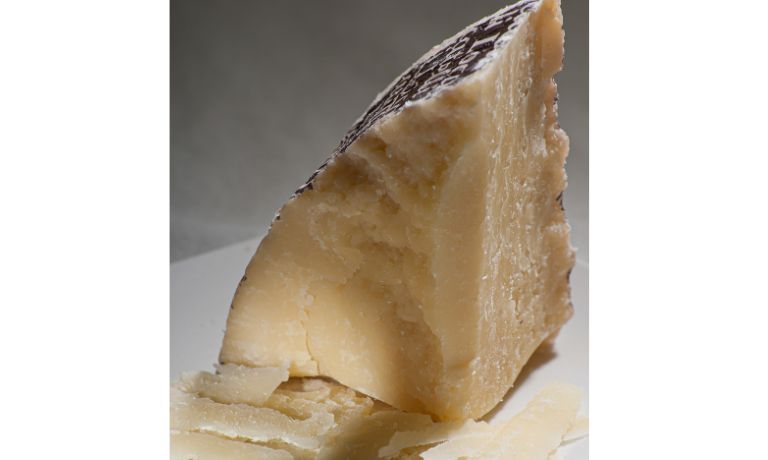
Ricotta Cheese
Ricotta cheese is a fresh, soft cheese made from cow’s milk’s whey. It has a smooth, creamy texture and a slightly sweet flavor.
Ricotta cheese is often used as an ingredient in Italian dishes like lasagna and cannelloni, but it can also be served with some honey or jam for a delicious snack.
The cheese can also be used instead of parmesan rinds in certain recipes.
Ricotta has fewer calories than parmesan and provides a different taste to the dish that may be more appealing to some people.
It is also much easier to find in grocery stores than hard-to-find parmesan rinds, making it an ideal substitute.
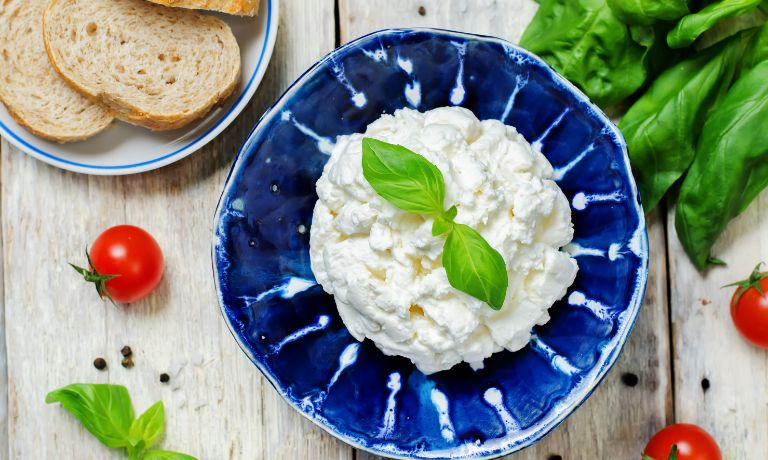
Roquefort Cheese
Roquefort cheese is a blue-veined sheep’s milk cheese aged in natural caves near the town of Roquefort-sur-Soulzon in France.
It is said to be one of the oldest cheeses in the world, with its origins dating back over 2,000 years.
The aging process and the unique flavor of the cheese are both due to the microorganisms that live in the caves.
This gives Roquefort a strong, pungent flavor and an unmistakable creamy texture with each bite.
Because of its unique flavor profile, Roquefort is often used as a substitute for Parmesan rind when making soups or other dishes that require a cheese rind.
Roquefort is especially popular in French cuisine, where it can enhance the flavor of soups and sauces.

Sap sago Cheese
Sap sago Cheese is an Alpine-style cheese made with toasted spelt. It has a mild, nutty flavor that pairs well with pasta and salads.
It is also ideal for grated Parmesan dishes as it has a similar texture to parmesan rinds.
Its savory flavor adds complexity to dishes, and its texture offers a unique touch when grated over pasta, risotto, and soups.
Additionally, it is relatively low in fat. It has a milder flavor than parmesan rinds, so it can be an alternative for those seeking a healthier substitute.
Sap sago Cheese is easy to find in stores and can be bought already grated or as a wedge, making it an ideal ingredient for adding flavor to recipes.
It is also affordable, making it a great option to add some extra flavor without spending too much.
FAQs
Is A Parmesan Wedge Equivalent To A Rind?
No, a Parmesan wedge is not equivalent to a rind.
A Parmesan wedge is a block of cheese that has been aged and cut into wedges, whereas a rind is the hard outer layer still surrounding the block of cheese.
Can You Substitute Cheese For Parmesan?
Yes, you can use a variety of cheeses, such as cheddar, mozzarella, or gouda, to replace parmesan in recipes.
However, remember that these cheeses do not have the same intense flavor as parmesan and may require additional seasoning for desired results.
Can You Use Cheddar Instead Of Parmesan In Risotto?
Yes, you can use cheddar instead of parmesan in risotto.
However, it will result in a slightly different flavor profile.
Cheddar cheese has a sharper flavor than parmesan, so it may overwhelm the other flavors in the dish.
Conclusion
Parmesan rinds are a classic Italian ingredient that can add flavor and texture to dishes.
However, there are many options to substitute for Parmesan rind that can provide similar flavors while being more accessible and less expensive.
These include Asiago, Cheddar, Gruyère, Feta, Pecorino, Ricotta, Roquefort and Sapsago cheese.
Each of these substitutes will offer a unique flavor and texture to the dish, allowing for endless culinary possibilities.
Ultimately, deciding which substitute will work best in your recipe is up to you.

